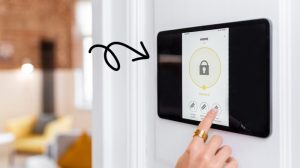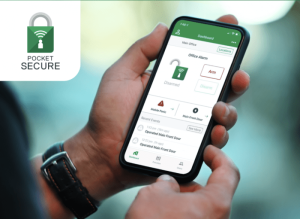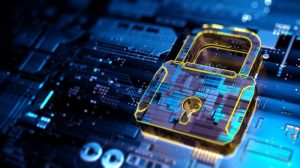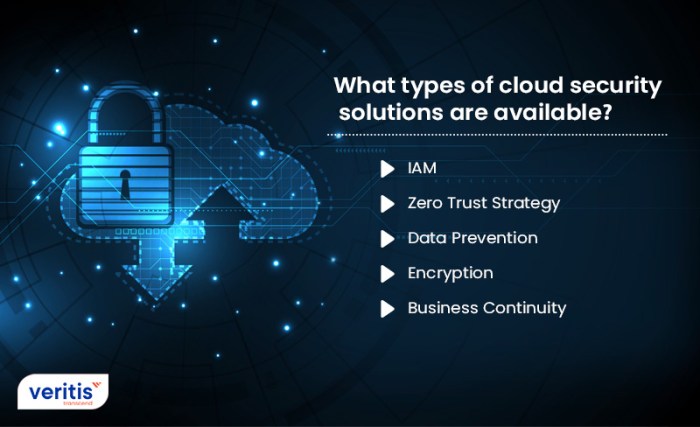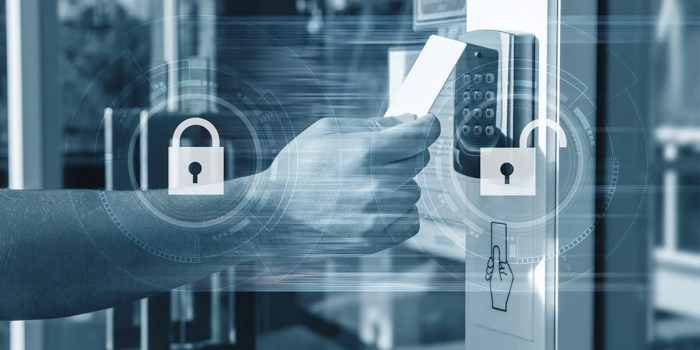
Step into the world of Physical security systems, where protection meets innovation and security is more than just a lock and key. Get ready for a thrilling journey through the realm of safeguarding your surroundings!
From access control to surveillance, we’ll explore the ins and outs of physical security systems, shedding light on their importance and effectiveness in various scenarios.
Introduction to Physical Security Systems
Physical security systems are designed to protect people, assets, and property by using various measures to prevent unauthorized access and ensure safety. These systems include a combination of components and technologies to create a secure environment in different settings.
Examples of Physical Security Components
- Access control systems: These include keypads, card readers, biometric scanners, and other devices to regulate entry to secure areas.
- Surveillance cameras: Used for monitoring and recording activities in and around a facility to deter crime and provide evidence in case of incidents.
- Alarms and sensors: Detect unauthorized entry, motion, or other security breaches and alert security personnel or authorities.
- Perimeter barriers: Fences, gates, bollards, and barriers are physical obstacles that prevent or delay access to a restricted area.
Importance of Physical Security in Various Settings
Physical security is crucial in a variety of environments, including:
- Commercial buildings: Protecting employees, assets, and confidential information from theft, vandalism, and unauthorized access.
- Government facilities: Safeguarding sensitive data, critical infrastructure, and high-profile individuals from security threats.
- Residential areas: Ensuring the safety and privacy of residents, as well as deterring burglaries and intrusions.
- Industrial sites: Preventing accidents, theft, sabotage, and ensuring the security of valuable equipment and resources.
Types of Physical Security Systems

Physical security systems are essential for protecting assets and ensuring safety in various environments. There are different types of physical security systems that serve specific purposes and functions to safeguard people and property.
Access Control Systems
Access control systems are designed to regulate and monitor entry to a specific area. These systems use various methods such as keycards, biometric scans, or PIN codes to grant or deny access to individuals. Access control systems provide a secure and efficient way to manage who can enter a building or restricted area.
Surveillance Systems
Surveillance systems, including CCTV cameras and video monitoring, are used to observe and record activities in a particular location. These systems help deter criminal activities, provide evidence in case of incidents, and enhance overall security by monitoring areas in real-time.
Alarms Systems
Alarm systems are designed to alert individuals of potential security threats or breaches. These systems can include intrusion alarms, fire alarms, or panic alarms that trigger notifications or alerts when unauthorized access or emergencies occur. Alarm systems are crucial for immediate response and mitigation of security risks.
Perimeter Security Systems
Perimeter security systems are used to protect the outer boundaries of a property or facility. These systems can include barriers like fences, gates, or bollards, as well as sensors or detectors to detect intrusions. Perimeter security systems help prevent unauthorized access and enhance overall security measures.
Video Analytics Systems
Video analytics systems use advanced technology to analyze video footage and detect suspicious behavior or anomalies. These systems can identify specific objects, track movements, and provide real-time alerts based on predefined criteria. Video analytics systems enhance the effectiveness of surveillance systems and improve security monitoring capabilities.
Components of Physical Security Systems
When it comes to physical security systems, various components work together to create a comprehensive security solution. These components play a crucial role in safeguarding assets, individuals, and information from potential threats.
Barriers
Barriers are physical obstacles that prevent unauthorized access to a facility or area. This can include fences, walls, gates, bollards, and turnstiles. By implementing robust barriers, organizations can control entry points and deter intruders from gaining access to sensitive areas.
Locks
Locks are essential components of physical security systems that secure doors, windows, cabinets, and other entry points. High-quality locks, such as electronic keypads, biometric readers, and smart locks, help restrict access to authorized personnel only. By using advanced locking mechanisms, organizations can enhance the overall security of their premises.
Sensors
Sensors are devices that detect and respond to changes in the environment, such as motion, heat, or sound. These sensors are integrated into physical security systems to monitor and alert security personnel of any suspicious activities. By deploying sensors strategically, organizations can quickly identify potential threats and take appropriate action to mitigate risks.
Monitoring Systems
Monitoring systems, such as CCTV cameras, access control systems, and alarm systems, provide real-time surveillance and tracking of activities within a facility. These systems enable security personnel to monitor and respond to incidents promptly. By combining monitoring systems with other components, organizations can create a comprehensive security infrastructure that ensures round-the-clock protection.
Designing and Implementing Physical Security Systems
When it comes to designing and implementing physical security systems, there are several important steps to consider. These steps ensure that the system is effective in protecting the premises and assets it is meant to secure.
Steps in Designing a Physical Security System
- Conduct a thorough risk assessment to identify potential vulnerabilities and threats.
- Define the security objectives and requirements based on the findings of the risk assessment.
- Design a comprehensive security plan that includes access control, surveillance systems, alarms, and other security measures.
- Select the appropriate security technologies and equipment that align with the security plan.
- Create a layout of the security system, considering factors such as the layout of the premises, entry and exit points, and high-risk areas.
Implementing Physical Security Measures
- Install security cameras, access control systems, alarms, and other security equipment as per the security plan.
- Train personnel on how to use the security systems effectively and respond to security incidents.
- Establish protocols for monitoring and responding to security alerts and alarms.
- Regularly test and evaluate the effectiveness of the physical security measures in place.
Best Practices for Maintaining and Updating Physical Security Systems
- Regularly conduct security audits to identify any weaknesses or gaps in the security system.
- Keep up-to-date with the latest security technologies and trends to ensure the security system remains effective.
- Implement a system for regular maintenance and inspection of security equipment to ensure proper functioning.
- Train staff on security protocols and procedures to ensure they are prepared to respond to security incidents.
Security in the Digital Age

In today’s digital age, the integration of physical security systems with digital technologies has become crucial in ensuring comprehensive security measures. With the advancement of technology, the landscape of security has evolved, requiring a more holistic approach to address potential threats.Cybersecurity plays a vital role in enhancing physical security measures by protecting digital systems that control and monitor physical security devices.
This integration allows for real-time monitoring, remote access control, and data analytics to improve overall security effectiveness.
The Role of Cybersecurity in Physical Security
- Cybersecurity safeguards digital systems from cyber threats that could compromise physical security measures.
- Integration of cybersecurity measures ensures data integrity and confidentiality, preventing unauthorized access to sensitive information.
- Continuous monitoring of network security helps detect and respond to cyber threats in a timely manner, enhancing overall security resilience.
Challenges and Opportunities in Digitization of Security Systems
- Challenges: The interconnected nature of digital security systems increases vulnerability to cyber-attacks, requiring robust cybersecurity measures to mitigate risks.
- Opportunities: Digitization allows for automation of security processes, improving efficiency and effectiveness of security operations.
- Integration of advanced technologies such as AI and machine learning enables predictive analytics for proactive threat detection and prevention.
Conclusion
As we conclude our exploration of Physical security systems, remember that safety is not just a concept—it’s a crucial aspect of our daily lives. Stay informed, stay secure, and embrace the power of modern security solutions.
FAQ Compilation
What are the key components of physical security systems?
The key components include barriers, locks, sensors, and monitoring systems, all working together to create a robust security framework.
How can I optimize physical security components?
To optimize physical security components, focus on integration strategies that enhance the overall effectiveness of the system.
What is the role of cybersecurity in physical security systems?
Cybersecurity plays a crucial role in enhancing physical security measures by protecting digital interfaces and preventing cyber threats.
